LabQuest has a capacitive touch screen like those found on tablets and smart phones. LabQuest is controlled by touching the screen. Instead of using your finger, you can use a stylus designed for capacitive touch screens (not included) if desired.
Common Gestures
- Single tap—Use a single tap to interact with most objects on the device.
- Touch and drag—Use touch and drag to select regions on a graph or to scroll through menus.
- Long press —Use the long press to activate special functionality on some objects such as holding down the keyboard shift key to enable shift lock or to initial a table selection.
- Two-finger pinch/zoom/pan—Use this gesture to manually scale graphs or pan the data table.
- Double tap—Double tap to scale the graph to fit the data or to edit elements of the data table such as cell data (when allowed), column name, or dataset name.
- Single-finger swipe (from edges)—This gesture is used to change which app is displayed.
Navigating LabQuest 3
- Accessing Home
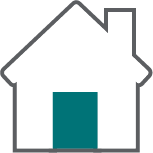 —Tap or swipe down from the left side of the Notification bar to view the Home screen. Tap to select an application you want to use.
—Tap or swipe down from the left side of the Notification bar to view the Home screen. Tap to select an application you want to use. - Accessing Settings
 —Tap or swipe down from the left side of the Notification bar to view the Settings screen. Tap to select the setting you want to modify.
—Tap or swipe down from the left side of the Notification bar to view the Settings screen. Tap to select the setting you want to modify. - Switching between running apps—Swipe left or right from the edge of the screen to switch between running apps. The app order is represented by the icons on the left side of the notification bar. The order that the icons appear relates to the order the apps were initially launched.
- Navigating the LabQuest App screens—The LabQuest App Meter
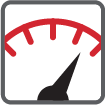 , Graph
, Graph 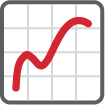 , Table
, Table 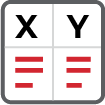 , and Notes
, and Notes 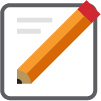 screens are accessed by tapping the associated tab icons.
screens are accessed by tapping the associated tab icons. - Start/stop data collection—Tap Collect,
 , to start data collection. You can tap Stop,
, to start data collection. You can tap Stop,  , to end data collection or wait until the collection completes.
, to end data collection or wait until the collection completes.
Navigating the Graph
Below are the common gestures used to navigate the Graph screen.
- Manually scale the graph—Use a two-finger pinch/zoom/pan gesture to rescale the graph as desired.
- Scale the graph to fit the data—Double tap the graph to scale the graph to fit the data.
- Examine a data point—Tap the graph to examine a data point.
- Select a region of data—Touch and drag across the graph to highlight a region of data for analysis.
- Change which columns are plotted—Tap the axis label and select the applicable column to plot.
- Change the displayed Run—Tap the Run indicator button,
 , to change which dataset is displayed on the graph.
, to change which dataset is displayed on the graph.
Navigating the Table Screen
Below are the common gestures used to navigate the Table screen.
- Edit a cell —Double tap a cell, column name, or run name to edit the contents.
- Scroll the data table—Swipe up and down to scroll the data table.
- Pan the data table—When there are more than five columns in your data table, you can touch and drag the table to view the additional columns.
- Select multiple cells—Touch and hold, then drag across the screen to select multiple cells.
- Change the displayed Run—Tap the Run indicator button,
 , to change which dataset is displayed on the data table.
, to change which dataset is displayed on the data table.
